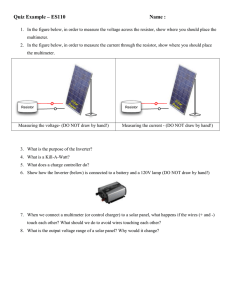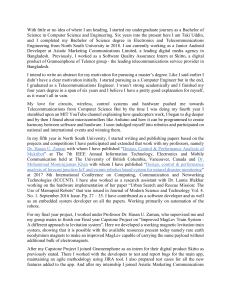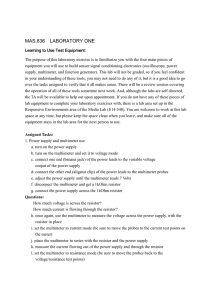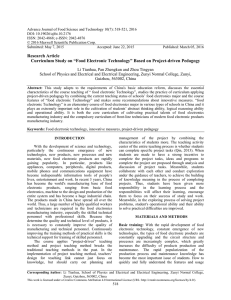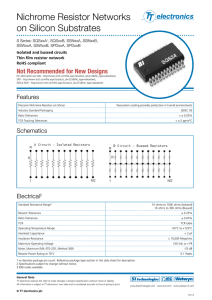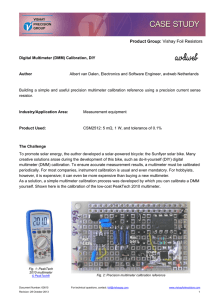Robotics Club Syllabus Fall 2011
advertisement
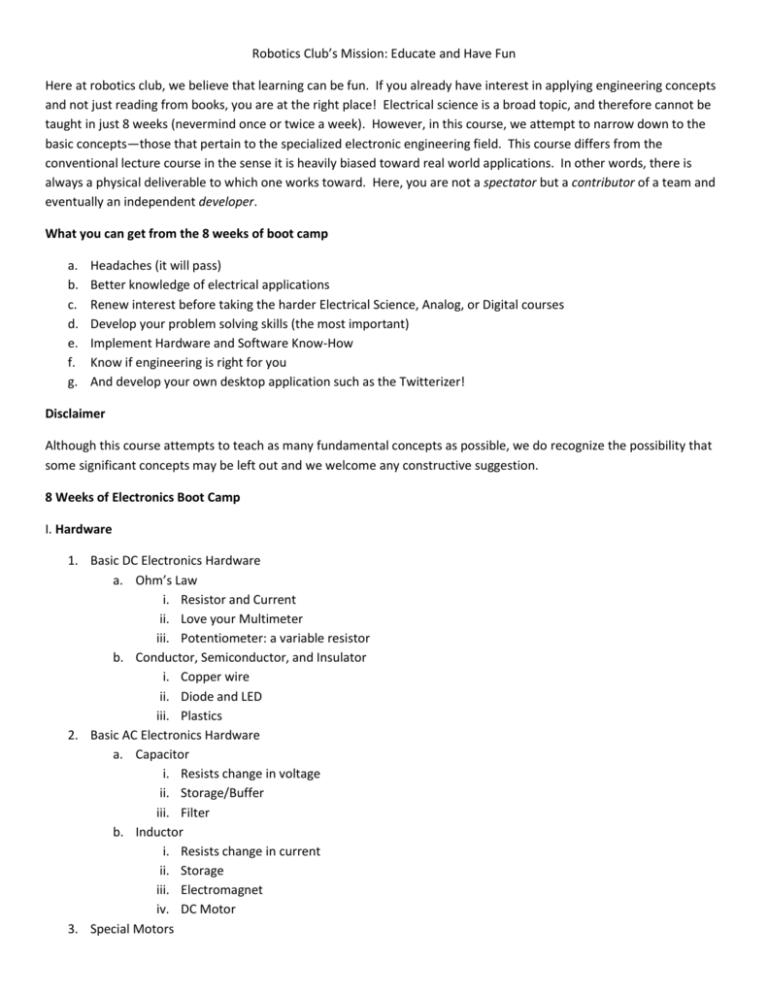
Robotics Club’s Mission: Educate and Have Fun Here at robotics club, we believe that learning can be fun. If you already have interest in applying engineering concepts and not just reading from books, you are at the right place! Electrical science is a broad topic, and therefore cannot be taught in just 8 weeks (nevermind once or twice a week). However, in this course, we attempt to narrow down to the basic concepts—those that pertain to the specialized electronic engineering field. This course differs from the conventional lecture course in the sense it is heavily biased toward real world applications. In other words, there is always a physical deliverable to which one works toward. Here, you are not a spectator but a contributor of a team and eventually an independent developer. What you can get from the 8 weeks of boot camp a. b. c. d. e. f. g. Headaches (it will pass) Better knowledge of electrical applications Renew interest before taking the harder Electrical Science, Analog, or Digital courses Develop your problem solving skills (the most important) Implement Hardware and Software Know-How Know if engineering is right for you And develop your own desktop application such as the Twitterizer! Disclaimer Although this course attempts to teach as many fundamental concepts as possible, we do recognize the possibility that some significant concepts may be left out and we welcome any constructive suggestion. 8 Weeks of Electronics Boot Camp I. Hardware 1. Basic DC Electronics Hardware a. Ohm’s Law i. Resistor and Current ii. Love your Multimeter iii. Potentiometer: a variable resistor b. Conductor, Semiconductor, and Insulator i. Copper wire ii. Diode and LED iii. Plastics 2. Basic AC Electronics Hardware a. Capacitor i. Resists change in voltage ii. Storage/Buffer iii. Filter b. Inductor i. Resists change in current ii. Storage iii. Electromagnet iv. DC Motor 3. Special Motors 4. a. Steppers b. Servos Electrical Switches and Debug a. The Transistor i. How it works (npn type) ii. Amplifier Too? Yes! b. Application of Electromagnet i. Relays c. Use all your resources i. Oscilloscope and Multimeter ii. Simulators 1. Labview 2. MultiSim iii. Googling your way out! iv. Datasheet is your friend v. Dreamspark.com (Finally, Microsoft is giving back) II. Software 1. Introduction to Programming a. The C language b. Embedded C 2. Microcontroller: Nice Things in a Small Package a. Blinking LED b. Controlling Motor through Electrical Switches c. And a Whole Lot More! 3. Digital Communication a. Universal Asynchronous Receive and Transmit (UART) i. COM Port ii. Baud rate iii. Parity iv. Data Bits v. Stop Bit vi. Handshake 4. Visual Studio a. UART application b. Twitter application c. What’s yours? III. Develop your application Club’s Officers Pres. Kelvin Le Vice Pres. Joseph Acquaviva Treasure Zheila Azartash-Namin
